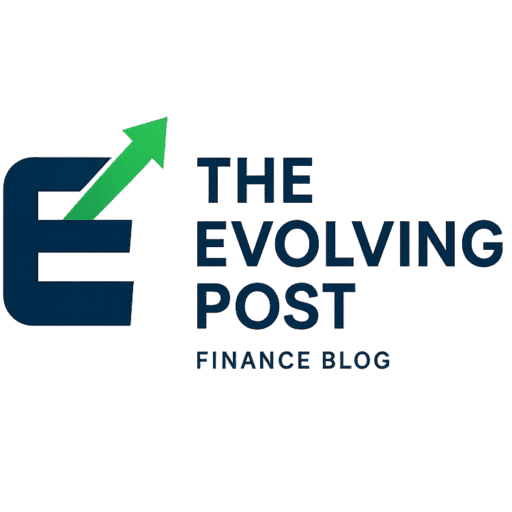When optimism fades, spending slows — here’s what falling consumer confidence means for your wallet, investments, and future security.
The latest dip in U.S. consumer confidence may look like just another line on a chart, but its ripple effects could be felt at your local grocery store, in your 401(k), and even in your mortgage options. According to recent data, the Consumer Confidence Index fell from 98.4 to 93, its lowest level since early 2023.
But what does that really mean for the average American?
In short: people are worried. About inflation. About jobs. About the future. And when confidence wanes, so does spending — the fuel that powers nearly 70% of the U.S. economy.
Let’s explore why this matters, what’s driving the shift, and how you can protect (and maybe even grow) your finances during uncertain times.
Background & Context: Why Confidence Is Falling
The Consumer Confidence Index, published by The Conference Board, isn’t about feelings — it’s about expectations. It measures how optimistic or pessimistic Americans are about:
-
Their current financial situation
-
Job prospects
-
Business conditions
-
Inflation and purchasing power
In 2025, that optimism is starting to crack. Here’s why:
-
Tariff anxieties: Ongoing concerns about trade policies are weighing heavily on consumer sentiment. More than 39% of U.S. CFOs now cite tariffs as a key economic risk.
-
Inflation fatigue: Despite progress in taming inflation, everyday essentials — from insurance premiums to groceries — remain stubbornly high.
-
Geopolitical friction: Even though tensions with Iran haven’t escalated, the looming threat of global instability adds to a sense of vulnerability.
Taken together, these pressures create a fragile mood — one where households hesitate to spend, borrow, or invest boldly.
Deep-Dive Analysis
Impact on Homeowners and Mortgage Seekers
When consumer confidence drops, lenders pay attention.
That’s because confidence is often a leading indicator of economic slowdown — and banks become more cautious when they suspect a downturn is ahead. This can lead to:
-
Tighter lending standards, especially for first-time homebuyers or those with borderline credit
-
Higher interest rates as lenders price in risk
-
Slower home appreciation if demand weakens
If you’re already a homeowner with a fixed-rate mortgage, you’re likely insulated — at least in the short term. But if you’re considering refinancing or buying property in the next 6–12 months, this uncertainty could impact your options.
Your move? Monitor local housing markets closely and stay nimble. Look for mortgage rate dips or lender promotions — they often appear in volatile environments.
Impact on Investors & Savers
In times of low consumer confidence, market behavior can shift dramatically.
Investors may rotate out of riskier assets (like growth stocks) and into more conservative options (like bonds or dividend-paying equities). Market volatility often increases, and sentiment-driven swings can become more pronounced.
Here’s how to adapt:
-
Rebalance your portfolio with an eye on diversification — across sectors, asset classes, and geographies
-
Increase exposure to defensive sectors like utilities, healthcare, and consumer staples
-
Consider short-duration bonds or high-yield savings as cash-alternatives
For savers, this is a wake-up call. Inflation — even if cooling — still erodes your purchasing power. Seek out high-yield savings accounts, or consider parking some funds in Treasury I Bonds or TIPS (Treasury Inflation-Protected Securities) for stability.

Impact on Consumers & the Job Market
This is where falling confidence becomes a self-fulfilling cycle.
As people grow uncertain about the economy, they pull back on spending — postponing vacations, skipping big-ticket items, or cutting back on dining out. That hurts businesses, which in turn might slow hiring, cut hours, or delay pay raises.
The job market, while still relatively strong in many sectors, is showing signs of stress in:
-
Retail and hospitality, where consumer cutbacks hit hardest
-
Logistics and e-commerce, now adjusting after pandemic over-expansion
-
Manufacturing, impacted by trade and cost pressures
For workers, this is a time to shore up your resume, update your skills, and strengthen your professional network. Career resilience matters most when the economy gets choppy.
Actionable Takeaways & Key Insights
-
Track the Fed and market signals. Consumer confidence drops often precede monetary policy shifts. Lower confidence may encourage the Fed to pause rate hikes — or even cut rates later in the year.
-
Review your debt strategy. If you have variable-rate loans or credit card debt, consider consolidating or locking in fixed rates before lenders tighten.
-
Prioritize liquidity. Maintain an emergency fund covering at least 3–6 months of expenses — especially if you’re in a volatile industry.
-
Invest for resilience. Avoid reactionary moves, but ensure your portfolio includes assets that can weather slower growth or inflationary persistence.
-
Think local. Consumer sentiment isn’t uniform — certain regions, industries, and cities may be more resilient. Follow local job trends and inflation indicators in your area.
Conclusion & Call to Action
Consumer confidence isn’t just a technical data point — it’s a reflection of our collective financial psychology. And when that confidence slips, it reshapes how we spend, borrow, invest, and plan.
The good news? Understanding the forces behind the shift gives you a head start.
Instead of reacting to headlines, you can act with intention — adjusting your budget, rebalancing your investments, or even timing a major purchase more strategically.
Because in uncertain times, the most powerful financial tool you have is clarity.
Stay tuned to The Evolving Post for more smart, actionable updates that impact your money and your future — because understanding the system is the first step to changing your financial story.
While this analysis is based on thorough research, it is for informational and educational purposes only and should not be considered financial advice.




